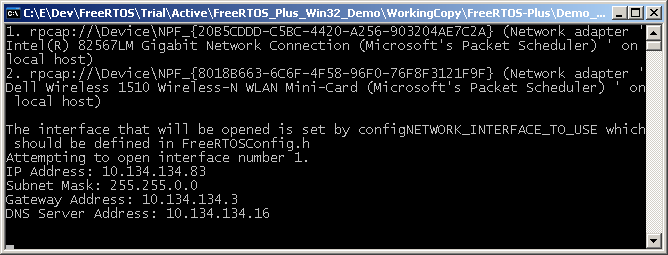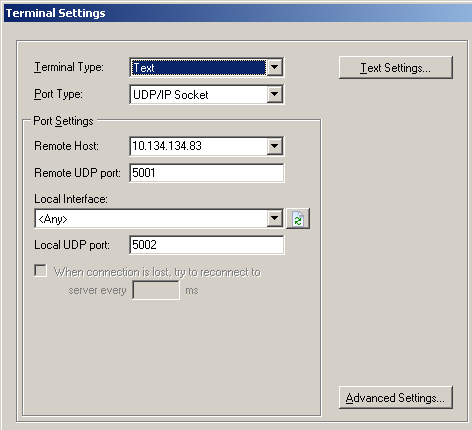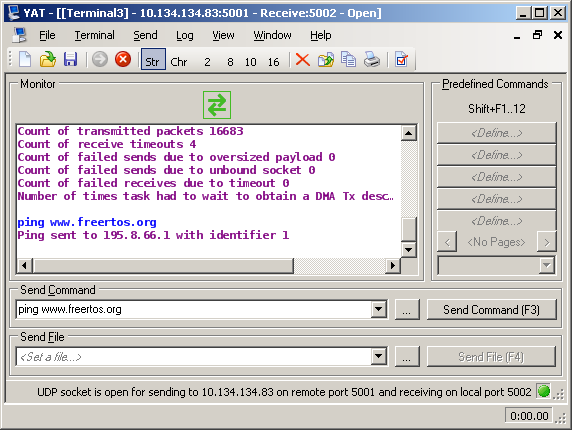| |||||||
|
Example FreeRTOS+UDP Project
|
/* Set the following constants to 1 or 0 to define which tasks to include and
exclude. */
#define mainCREATE_UDP_CLI_TASKS 1
#define mainCREATE_SIMPLE_UDP_CLIENT_SERVER_TASKS 0
#define mainCREATE_UDP_ECHO_TASKS 1
|





